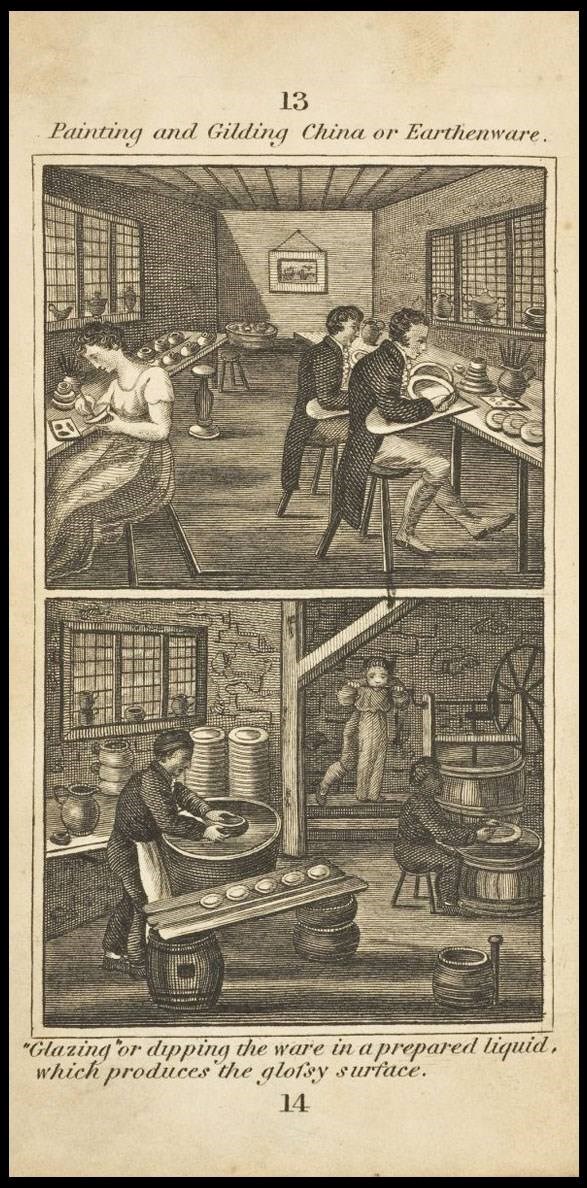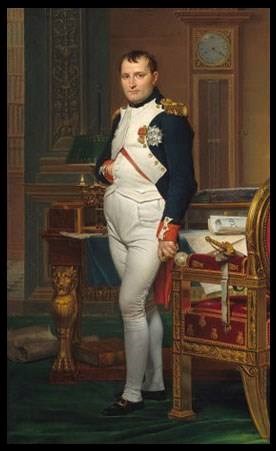Part of a series of articles titled Curious Collections of Fort Stanwix, The 19th & 20th Centuries.
Previous: Phoenix Bitters Bottle
Article

NPS Photo

(2017, August 22). Retrieved July 11, 2018, from (http://www.americanhistoricalstaffordshire.com/industry/representation- manufacturing-earthenware-1827).

Painting in the Samuel H. Kress Collection, National Gallery of Art, Washington D.C. (https://www.nga.gov/collection/art-object-page.46114.html)

Retrieved June 27, 2018, from (https://www.reuters.com/article/us-france-napoleon-hat/ napoleons-two-cornered-hat-up-for-grabs-at-french-auction-idUSKCN0ID23Y20141024)
Christie's of London. (2015, June). What Napoleon's hat tells us about the power of branding. Retrieved February 23, 2018, from: https://www.christies.com/features/What-Napoleons-hat-tells-us-about-the-power-of-branding-6280-3.aspx
Gaffney, D. (2004, June 21). Fanciful Figurines. Retrieved March 29, 2018, from: https://www.pbs.org/wgbh/roadshow/tips/staffordshirefigurines.html
Holmberg, T. (2013, July). FAQ #12: Why is Napoleon depicted with his hand in his coat? Retrieved February 06, 2018, from: http://www.napoleon-series.org/faq/c_hand.html
Howard, J. (n.d.). Staffordshire pottery Napoleon Bonaparte pearlware bust circa 1820 period England. Retrieved March 30, 2018, from: http://www.antiquepottery.co.uk/antique-pottery-and-ceramics/d/staffordshire-pottery-napoleon-bonaparte-pearlware-bust-circa-1820-period-englan/277792
Huguenaud, K. (2001, November). Napoleon's Hat. Retrieved February 23, 2018, from: https://www.napoleon.org/en/history-of-the-two-empires/objects/napoleons-hat/
Identifying Maker's Marks. (2017, April 05). Retrieved June 20, 2018, from: https://www.poplarforest.org/268-2/
Kirkpatrick, C. (2006, June 12). Potteries of Staffordshire. Retrieved February 12, 2018, from: https://britishheritage.com/potteries-of-staffordshire/
Miller, J. (2010, April 21). Antique collectors' corner: Staffordshire figures. Retrieved April 02, 2018, from:https://www.telegraph.co.uk/lifestyle/interiors/7614512/Antique-collectors-corner-Staffordshire-figures.html
Pettinger, T. (2013, January 10). Napoleon Bonaparte Biography. Retrieved March 29, 2018, from: https://www.biographyonline.net/military/napoleon.html
Sage, A. (2014, October 24). Napoleon's two-cornered hat up for grabs at French auction. Retrieved June 27, 2018, from: https://www.reuters.com/article/us-france-napoleon-hat/napoleons-two-cornered-hat-up-for-grabs-at-french-auction-idUSKCN0ID23Y20141024
Tulk B. (2018). Staffordshire Pottery Figures - DISCOVER. Retrieved February 12, 2018, from: http://madelena.com/introduction-staffordshire-pottery-figures.php
Wages in the Nineteenth Century. (2017, August 22). Retrieved March 30, 2018, from: http://www.americanhistoricalstaffordshire.com/industry/wages-nineteenth-century
Workman, A. (n.d.). Victorian Staffordshire Figures. Retrieved February 06, 2018, from: http://www.aw-antiques-collectibles.co.uk/victorian-staffordshire-figures.php
Part of a series of articles titled Curious Collections of Fort Stanwix, The 19th & 20th Centuries.
Previous: Phoenix Bitters Bottle
Last updated: October 6, 2022